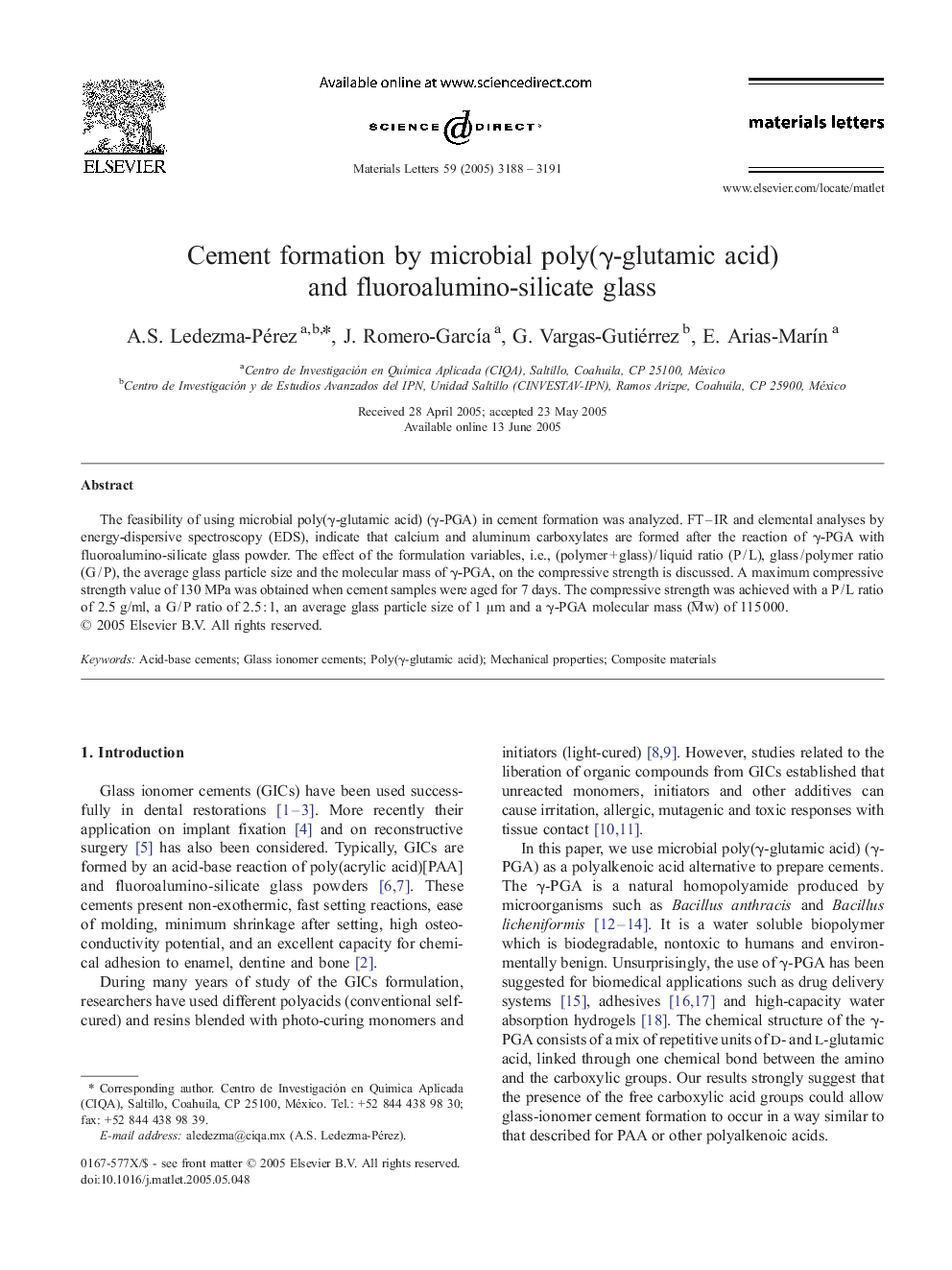| Article ID | Journal | Published Year | Pages | File Type |
|---|---|---|---|---|
| 1654875 | Materials Letters | 2005 | 4 Pages |
The feasibility of using microbial poly(γ-glutamic acid) (γ-PGA) in cement formation was analyzed. FT–IR and elemental analyses by energy-dispersive spectroscopy (EDS), indicate that calcium and aluminum carboxylates are formed after the reaction of γ-PGA with fluoroalumino-silicate glass powder. The effect of the formulation variables, i.e., (polymer + glass) / liquid ratio (P / L), glass / polymer ratio (G / P), the average glass particle size and the molecular mass of γ-PGA, on the compressive strength is discussed. A maximum compressive strength value of 130 MPa was obtained when cement samples were aged for 7 days. The compressive strength was achieved with a P / L ratio of 2.5 g/ml, a G / P ratio of 2.5 : 1, an average glass particle size of 1 μm and a γ-PGA molecular mass (M ¯w) of 115 000.
